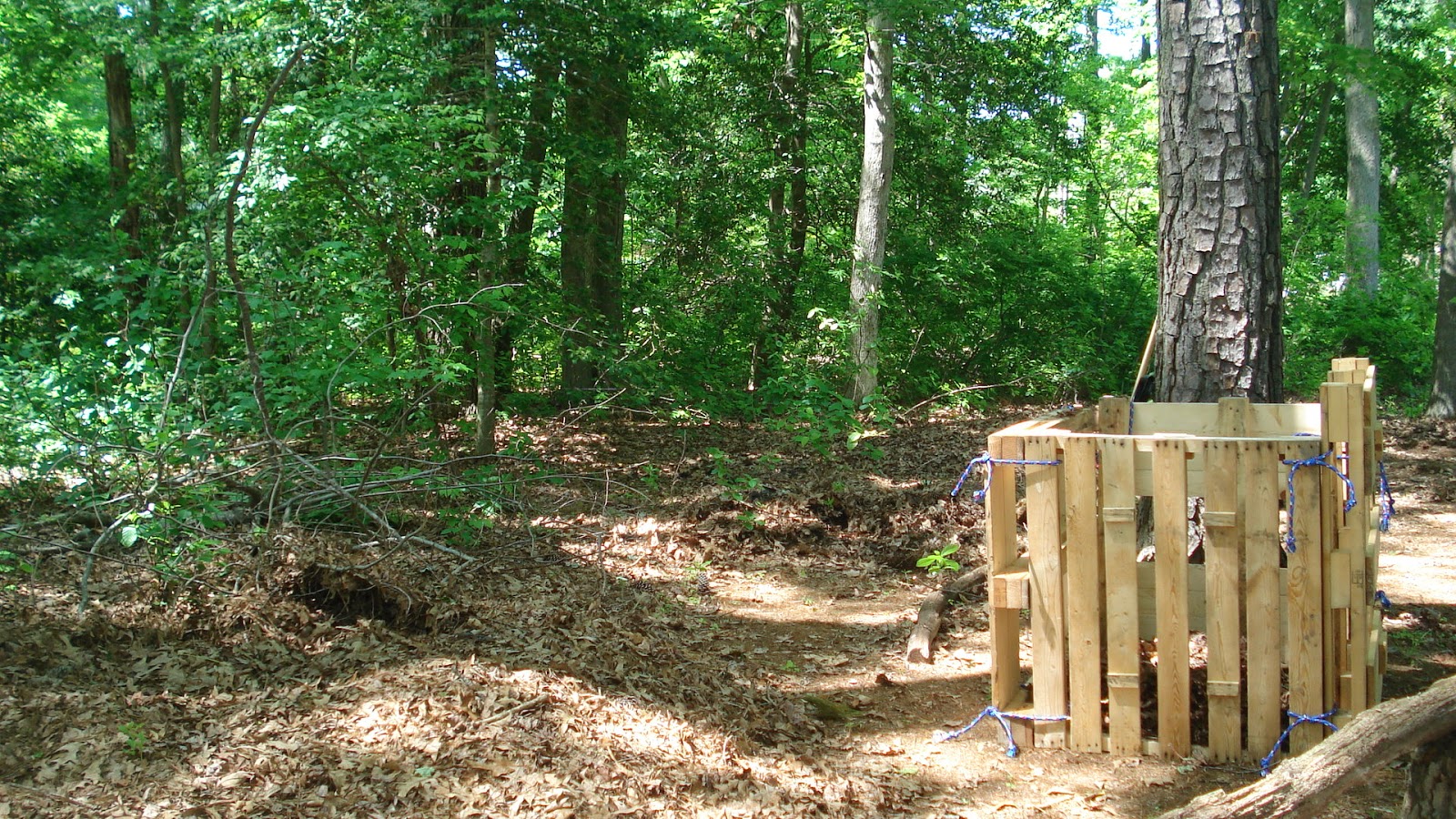If you consider yourself the least bit "green," "Eco friendly," or are consciously trying to shrink your carbon footprint, then composting is something you should know about and incorporate into your daily life. It's great if you have a big space, but even small areas can be used. When we lived in a townhouse in Philadelphia we had a small compost area in front of our home, right behind our tiny garden.
But now we're in a community that is much more suited for composting. Lower Slower Delaware may be a tourist destination for its beautiful beaches and tax-free outlet shopping, but it is still mostly farm country. Chicken farms and local corn are everywhere. And we now have a yard and a place for a proper compost area, surrounded by lots of trees.
I recently went to a class at the local library on composting by a Delaware master gardener, Carol Kinsey. That is one lady who sure appreciates the value of composting. She was both knowledgeable and enthusiastic. I was already composting, but after that class I changed things up just a bit. So, I thought I'd share what I learned about composting with you, so that you can benefit from it, too.
My husband brought home some pallets just so I could make a compost bin. (Awe, he does love me.) I picked a spot in the yard near the shed, along the tree line. I wanted the bin to be sturdy, but easy to disassemble, so I tied the corners together at the top and bottom with rope. If you have zip ties they work well, too. You will make a box, but with no bottom and no top. The reason you want it to come apart easily is so that you can turn the mixture.
Check out the one I made.
It's best to have pallets that are all the same size, but when you're working with free materials you work with what you've got. I recommend adding chicken wire to the bin to help keep small thing from falling out, or critters from getting in. (I did get some, just need to attach it.)
The next step is to fill it. The ideal ratio when composting is 3:1, 3 parts "brown" to 1 part "green." Your browns are your carbon source. These include leaves, newspaper, wood shavings and sawdust, paper towel. Your greens are the nitrogen source. These include grass clippings, old vegetables, coffee grounds and the filter, tea bags, egg shells and the carton. Manure from animals that do not eat meat is excellent for your compost bin, too. (As for me, the only manure I'm adding comes from our gerbil.)
Here's my little helper adding the bedding from his gerbil's cage. (How cool is that? The bedding, the food, and the manure are all good for the compost bin.)
I keep a large coffee can in the kitchen for coffee grounds and veggie scraps so I am not constantly making trips out to the compost bin. You do not need to cover it; it doesn't smell. It's actually better if you don't. Otherwise it gets real funky real fast. (Just trust me on this one.)
After every time I add compost from the kitchen I shovel enough leaves onto the top to cover everything. This keep the ratio as close to ideal as I can get it, plus it keeps things tidy. Our home is bordered by a vacant lot, so we never have to worry about having enough leaves. See what I mean?
Here's a close up of the compost bin in action.
You will want to keep it moist, so if you're in an area that doesn't get a lot of rain, you'll need to hose it down once in a while. You want it wet, but not saturated. Then just wait. In a few months you'll have the kind of compost your garden will thank you for.
Just remember...
So, what are you waiting for?
The above image is from an informational brochure I was given at the composting class. Click
here to see the brochure in its entirety.










